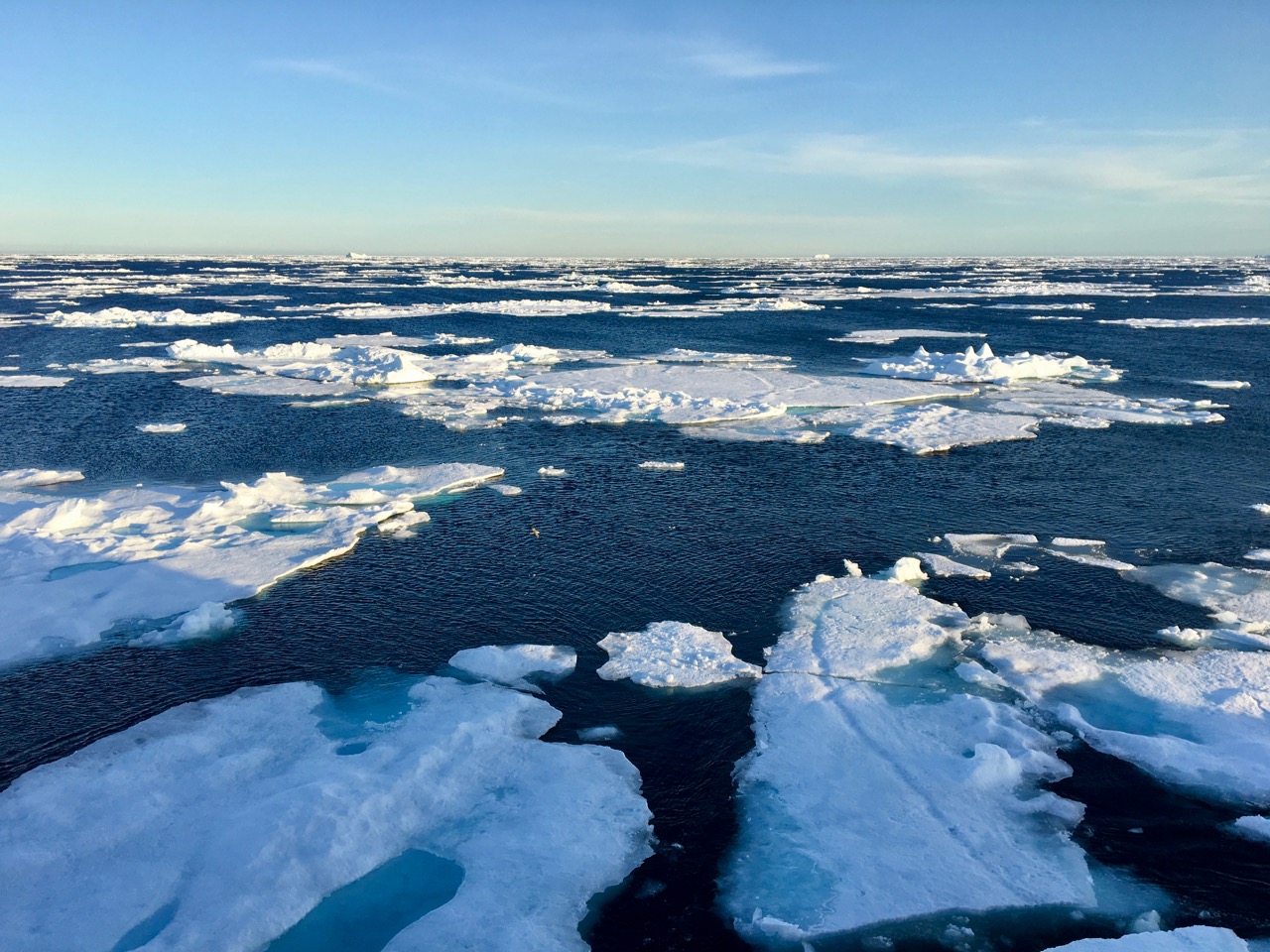UC Irvine scientists identify potential deep-ocean greenhouse gas storage solution

Sea ice viewed from the CCGS Amundsen during the sampling campaign in Baffin Bay between Canada and Greenland.
Irvine, Calif., Oct. 17, 2024 — As the planet continues to warm and the ramifications of human-driven climate change continue to amplify, the need to find ways to mitigate climate change is growing. In Nature Communications, University of California, Irvine scientists describe a new technique that allows them to see how complex organic molecules made by marine bacteria can store climate-warming carbon in the deep ocean.
“It’s the first time we’ve measured this type of thing in the seawater,” said Brett Walker, an associate professor in the Department of Earth System Science and the senior author of the study. “Our new technique is great because you’re able to look at the composition of all organic molecules in seawater and see how they cycle.”
Walker and his team did fieldwork at Baffin Bay between Canada and Greenland. The team measured the concentrations of a class of molecules called carboxyl-rich alicyclic molecules (or CRAM) in seawater and discovered that certain kinds of organic molecules are preferentially stored in the deep ocean, whereas others cycle quickly to the surface.
“In the deep ocean, what we find is about one-quarter to half of the CRAM goes away, and the only way you can have that removal is biologically, by heterotrophic bacteria eating this material as an energy source,” said Walker. “We used to think CRAM built up in the deep ocean. But if you look at the concentration data we produced for Baffin Bay, a completely different picture emerges, and we identify at least in Baffin Bay in this arctic region that there’s actually tons of CRAM being produced in the sunlit surface ocean that is later being removed at depth.”

Conversely, if half of the CRAM is unreactive and stored in the deep ocean, this may mean the bacteria can store planet-warming carbon derived from surface CO2 over very long time scales.
“That kind of changes our thinking about what we previously thought about how CRAM cycles,” said Walker. “If more CRAM can be stored in the deep ocean, presumably it would have the potential to mitigate atmospheric climate on centennial timescales.”
The next step is to find a way to manipulate bacteria into storing as much CRAM in the deep ocean as possible.
“The goal would be to explore if there’s a natural process by which you could enhance the natural production of these inert compounds at depth with native bacterial populations or something like that,” Walker said. “If you just enhance the rate of deep ocean storage a little bit, you could change the carbon storage dramatically over the course of a millennia.”
Walker and his colleagues plan to sort out whether or not the same biochemical process is at work in ocean waters around the world. “We plan to evaluate rates of production or loss of CRAM with deep water formation, and ocean circulation,” he said.
Collaborators include Kayla McKee and Lauren O’Reilly (University of Ottawa) and Hussain Abdulla (Texas A&M Corpus Christi). This work was supported by the Natural Sciences and Engineering Research Council (NSERC) of Canada through a Discovery Grant, Accelerator and Launch Supplements (RGPIN- 2020-06501, RGPAS-2020-00071, DGECR-2020-00256; to B.D.W.), the New Frontiers in Research Fund (NFRFE-2019-00794 to B.D.W.) and the Canada Research Chairs program (CRC-2018-00050 to B.D.W.).
UC Irvine’s Brilliant Future campaign: Publicly launched on Oct. 4, 2019, the Brilliant Future campaign aims to raise awareness and support for the university. By engaging 75,000 alumni and garnering $2 billion in philanthropic investment, UC Irvine seeks to reach new heights of excellence in student success, health and wellness, research and more. The School of Physical Sciences plays a vital role in the success of the campaign. Learn more at https://brilliantfuture.uci.edu/uci-school-of-physical-sciences/.
About the University of California, Irvine: Founded in 1965, UC Irvine is a member of the prestigious Association of American Universities and is ranked among the nation’s top 10 public universities by U.S. News & World Report. The campus has produced five Nobel laureates and is known for its academic achievement, premier research, innovation and anteater mascot. Led by Chancellor Howard Gillman, UC Irvine has more than 36,000 students and offers 224 degree programs. It’s located in one of the world’s safest and most economically vibrant communities and is Orange County’s second-largest employer, contributing $7 billion annually to the local economy and $8 billion statewide. For more on UCI, visit www.uci.edu.
Media access: Radio programs/stations may, for a fee, use an on-campus studio with a Comrex IP audio codec to interview UC Irvine faculty and experts, subject to availability and university approval. For more UC Irvine news, visit news.uci.edu. Additional resources for journalists may be found at https://news.uci.edu/media-resources/.
